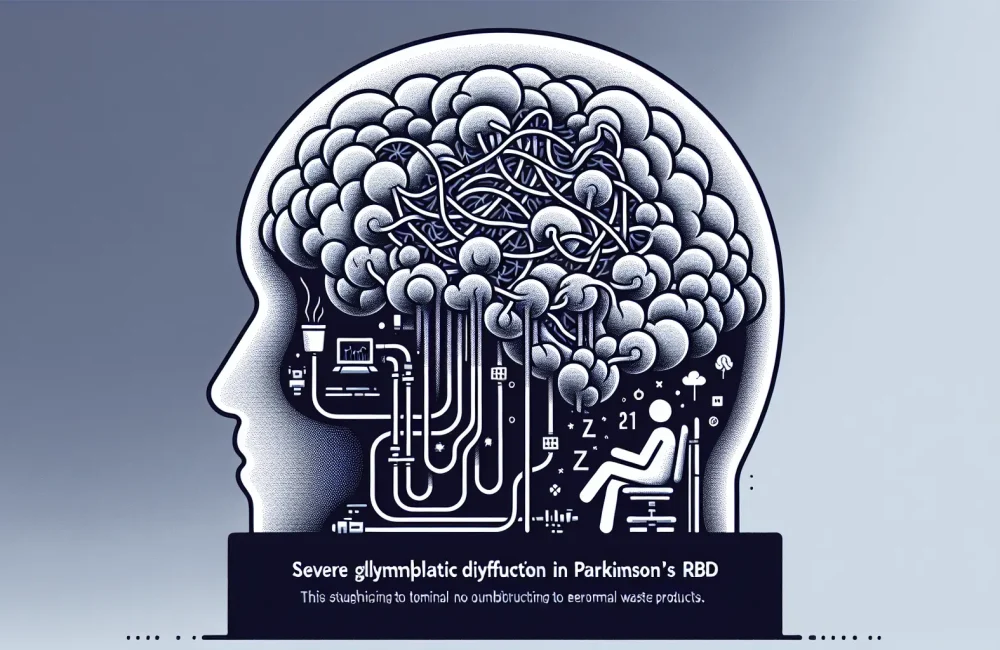By CAFMI AI From npj Parkinson’s Disease (Open Access)
REM Density and Motor Symptoms in Parkinson’s Disease
REM (rapid eye movement) sleep density, referring to the frequency of eye movements during REM sleep, has emerged as an important physiological marker reflecting sleep quality and central nervous system activity. In Parkinson’s disease (PD), a neurodegenerative disorder traditionally recognized for its hallmark motor symptoms such as tremor, rigidity, and bradykinesia, REM sleep abnormalities are increasingly being appreciated for their clinical significance. This study evaluated the relationship between REM density and motor symptom severity in a cohort of PD patients using polysomnography coupled with standardized clinical motor assessments. The findings revealed that patients with lower REM density displayed more severe motor impairments, establishing a clear association between reduced REM activity and worse motor function. This highlights not only REM density as a potential objective biomarker for motor progression in PD but also points to the importance of including sleep assessments within routine clinical evaluations. Understanding the interaction between sleep physiology and motor symptomatology may inform therapeutic monitoring and refinement of dopaminergic treatment regimens. Furthermore, REM sleep disturbances may contribute to disrupted motor regulation through shared neurotransmitter system dysfunction, notably within dopaminergic and cholinergic pathways.
Cognitive and Autonomic Dysfunction Linked to REM Density Alterations
Beyond motor symptoms, PD encompasses a diverse range of non-motor manifestations, notably cognitive decline and autonomic nervous system dysfunction, which substantially affect quality of life and prognosis. This research demonstrated that diminished REM density significantly correlates with impairments in executive functions and memory, two cognitive domains critically affected in PD. These associations underscore the potential role of disturbed sleep physiology in exacerbating or perhaps driving cognitive deficits in this population. From a clinical perspective, monitoring REM density could aid in early identification of patients at risk for cognitive deterioration, allowing timely interventions aimed at optimizing sleep quality and potentially slowing cognitive decline. Additionally, the study identified a significant relationship between REM density and autonomic function abnormalities, including impairments in cardiovascular control and other involuntary functions. Given the complexity of autonomic regulation and its disturbance in PD, these results suggest that disrupted REM sleep may be an indicator or contributor to broader autonomic dysregulation. Clinicians should consider comprehensive autonomic testing and therapeutic strategies that address sleep quality to mitigate autonomic symptoms and related complications such as orthostatic hypotension and cardiac arrhythmias.
Therapeutic Implications and Future Directions for REM Density in PD
The connection between REM density and Parkinson’s disease symptoms opens new avenues for therapeutic interventions aimed at improving sleep architecture to potentially alleviate both motor and non-motor symptoms. Pharmacological strategies targeting neurotransmitter systems implicated in REM regulation, such as dopaminergic and cholinergic pathways, may beneficially modulate REM density and thereby symptom burden. Moreover, non-pharmacological approaches including cognitive behavioral therapy for insomnia, sleep hygiene optimization, and emerging neuromodulation techniques warrant investigation in PD populations with REM density abnormalities. Future research should focus on longitudinal studies to determine whether enhancing REM density can slow disease progression or improve quality of life. Additionally, integrating REM density measures into clinical trials could validate its utility as a biomarker for treatment efficacy. Overall, understanding and targeting REM density holds promise for comprehensive management and better patient outcomes in Parkinson’s disease.
Read The Original Publication Here






